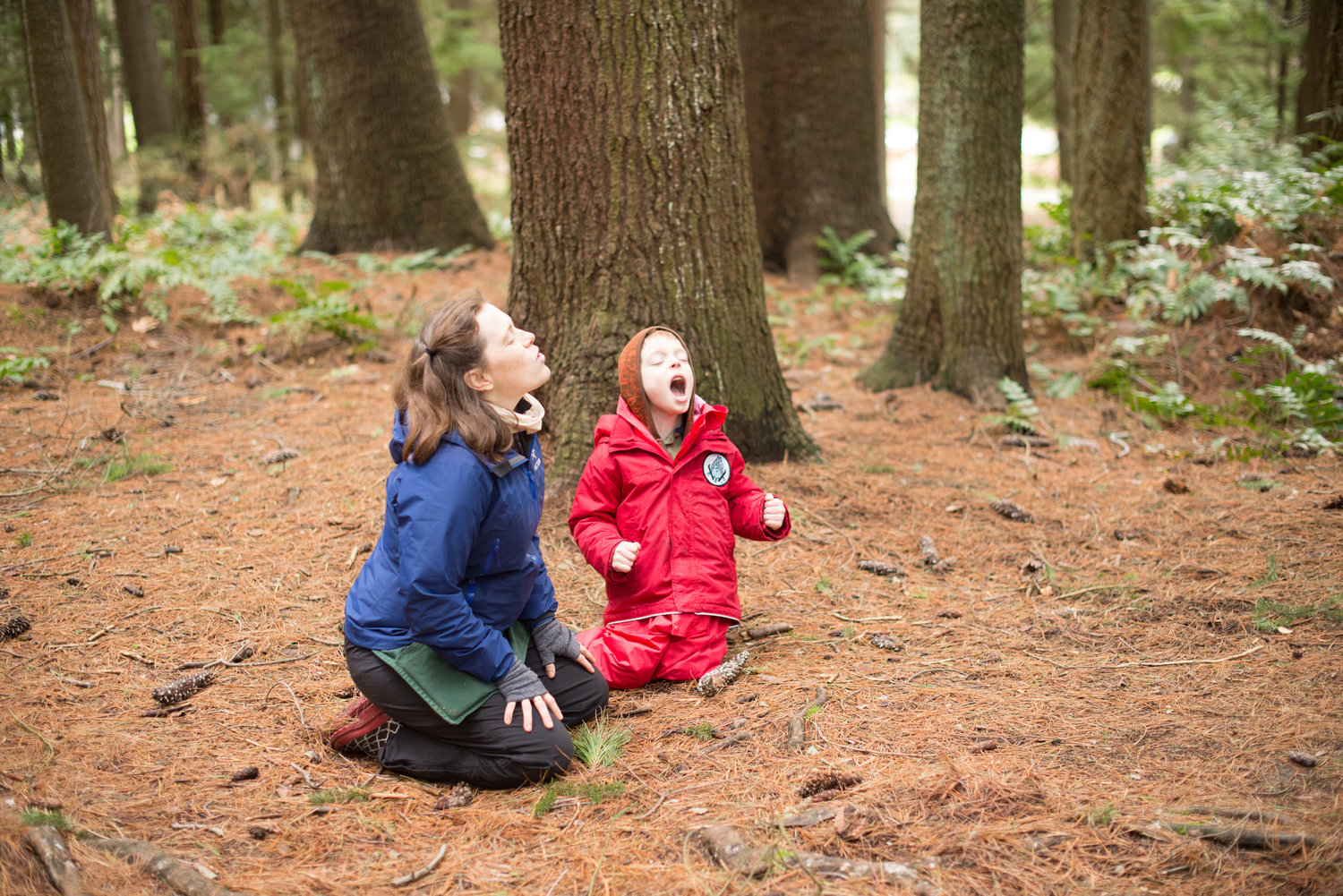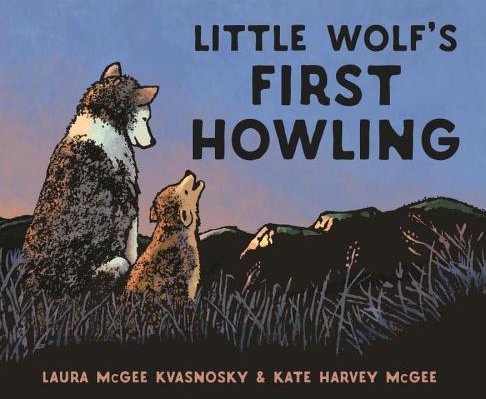Why we’re howling.
We find inspiration for new lessons at Tinkergarten in a number of ways. It can come from a material -- like mud or snow, a pattern of play we observe in a group of children or, quite often, a particularly special children’s book. Our latest inspiration comes from a gem of a book recommended by our leader in Arlington MA, Megan Recupero. The book is Little Wolf’s Howling, and it birthed the idea for our Winter Howling lesson this session. (If you live near a Tinkergarten leader, join in!)
From the first read, this book fit the spirit of Tinkergarten. It’s a marvelous story about the night the main character, Little Wolf, goes out with Big Wolf to learn how to howl. The main messages of the story are: be the leader of your own play; and celebrate “joy and wildness.” Both of these themes are very much at the heart of what we do at Tinkergarten. The beautiful and whimsical story feels like an invitation to us to howl, each in our own, unique way. It’s an invitation we’ve accepted, and passed along to the kids in the program!
But that’s not all that is special about this book. The very process of how the story was created explains the magic that is felt in the pages.
The power of collaboration.
The book is the product of a close collaboration between two sisters: Laura McGee Kvasnosky, who has written and illustrated many books for children, and Kate McGee, a fine artist who specializes in pastel landscapes. Laura penned the text and painted the black line for the artwork in Little Wolf’s First Howling, and Kate colorized the art in Photoshop with a digital palette and brushes. The process took months, going back and forth while each added bits to the book.
After talking with Laura and Kate, I learned that the sisters both felt a sense of personal discovery and true joy in their collaboration. Each time one would contribute a step, she felt as if she was creating a gift for her sister -- one that would “delight and surprise.” This way of framing the work not only made the experience gratifying, but according to the sisters it actually pushed them to create their best work. What a wonderful exercise in empathy and gratitude!

How we can engage our kids in collaborative play.
When I heard them speak about the project, it dawned on me that children do this quite naturally when they play together. They can also do this with us. If we slow down and take time to collaborate with kids, we’re not only giving them a chance to learn this give and take, but we also learn a great deal about them -- and from them -- in the process.
Here are a few ways we’ve enjoyed collaborating with our kids:
- Our Catching Colors activity is a great outdoor, collaborative art project. This activity was also inspired by one of our favorite picture books.
- Grab a piece of paper and a bundle of crayons or markers. Make a mark on the page. Invite your child to make a mark and pass it back to you. Act intrigued and delighted by the mark your child made. Make another mark and keep passing back and forth until you have completed a work of collaborative art.
- Make a mound of mud, snow, ice or even forest putty. Welcome your child to add something. Then add something yourself. Repeat.
- As your children get to preschool ages (or whenever they appear ready), consider suggesting a collaborative pen pal project with a grandparent or other relative who lives far away. Wonder what the other person will think and feel when he or she sees the next move you make, and take time to notice the excitement you feel when you pack up your work to send and when you receive the project back from your pen pal.
It may take several rounds of give and take before a young child picks up on the turn taking inherent in these projects, but it’s really never too early to start to try. Remain playful at all times. And, remember, you can always work side by side for a while instead. Even if the collaboration is happening as parallel play, it’s a start. Just be sure to show that you notice, take interest and even delight in the unique contributions your child makes to the shared project. And everyone once in a while, take a break to howl.

